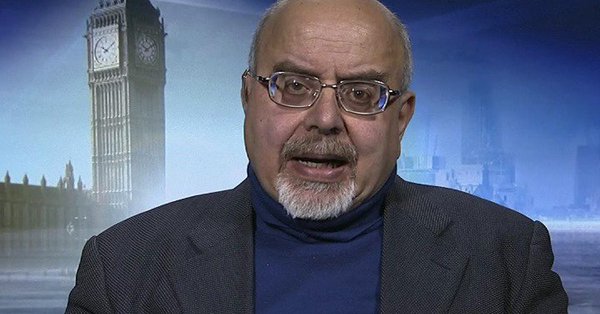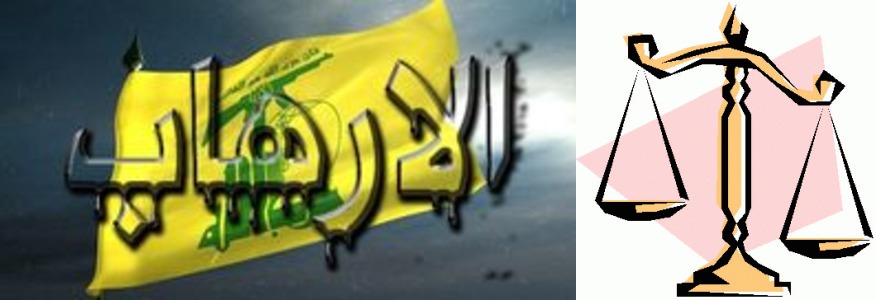Clear Choices Facing Iran
Eyad Abu Shakra/Asharq Al Awsat/August 15/18
The change of occupants in the White House, following the 2016 US Presidential elections, has affected the whole world; but for Iran, specifically, it has truly been significant.
Today mass demonstrations in the streets of major Iranian cities coincide with the countdown of escalating American sanctions. Last week, the sanctions announced by President Donald Trump against Iran took effect. They include banning governments and companies from using the US dollar in transactions with Iran, stopping all bank transfers in the US currency, forbidding any business in the Iranian rial, as well as forbidding banks from lending money to Iran, and US banks from dealing with their Iranian counterparts.
Furthermore, the US sanctions ban trading in various materials and goods with Iran, including iron, Iranian carpets and food items; and within three months, the sanctions will include petroleum and petrochemical products too.
So the scene in Washington has changed dramatically since the very long American – Iranian “honeymoon” during Barack Obama’s presidency.
It is obvious that the change that came with Trump’s election was to a large extent “ideological”. Actually, it is not what we have been accustomed to in a “superpower”, where one rarely finds radical ideological differences between its two “establishment parties”.
Barack Obama’s winning the White House was somehow “revolutionary” in many ways in America’s political life; and within eight years the first African-American president practically apologized to several “Third World” regimes for the policies of the “American Establishment” and what he might regard as its “imperialism”.
However, all this was upended with Trump’s election. Now, Washington does not apologize to anybody. There is no special treatment to Western “allies”. No preferential consideration or “good neighborly” relations with Canada and Mexico, the only countries with which the US shares land borders. Thus, if one would describe Obama’s election as a “revolution”, then Trump’s surely deserves to be thought of as a “counter revolution” that has bulldozed all the assumptions, equations and concessions of the previous eight years.
Turning the page of animosity with Iran’s “mullahs”, and diligently working to develop the relations with Tehran was the cornerstone of Barack Obama’s vision for Middle East. This vision was, basically, translated since 2011 by Washington’s encouragement of “regime change” targeting pro-US leaders (in the context of the so called “Arab Spring”); and on the other hand, signing a nuclear agreement that temporarily delays Iran becoming a nuclear power, but gives the “green light” to dominate the region without the need of a nuclear arsenal.
Writing about the Iranian political scene, and Washington’s change of position vis-a-vis Iran under the presidency of Trump, my Iranian colleague, Amir Taheri, recently raised the issue of “To resist or not to resist?”
He went on to say: “In Tehran’s political circles these days that is the question. The prospect of fresh sanctions to be imposed by the United States and its allies has helped intensify the debate which has marked Iranian politics since the mullahs seized power in 1979.”
Indeed, during the last few decades, we have become familiar with this? Political rhetoric, some of which sounds contradictory to those who do not know much about the complexity of Iran’s socio-political culture. It is a culture that accommodates on one side the extraordinary coexistence, if not marriage, between Shiite “political Islam”, and on the other Aryan nationalism. It is the latter that President Hassan Rouhani boasted in a message to Trump that it goes back around 7,000 years!
On one side, electoral democracy whose “seasons” Tehran uses in impressing the World and distract its masses, and on the other the “Vilayet-e-Faqih” which is above elections.
On one side the regime’s various “councils” and government ‘institutions’, and on the other a political-financial militia that has its tentacles in everywhere and in every sector called the “Iranian Revolutionary Guards” (IRGC).
On one side the “revolution” with its slogans and popular “purity”, and on the other the sway of the “bazaar” with its rich turbaned and non-turbaned tycoons.
On one side, those we are told are “reformists” and “pragmatists” who understand the world and talk to each of its capitals in the language it understands and likes, and on the other those who are known to be “conservative”, “hardliners” and “militarists” who boast about threatening Iran’s neighbors, destroy their cities, and take over the politics of the countries they dominate.
This is Iran that is protesting these days.
It is the Iran of young man and women, and of the future, that – like every country – desires to be part of the world. Desires to enjoy its wealth rather have it spent by “dogmatic” extremists on fatal, destructive, and costly adventures and expansionist foreign projects, either under the banners of “exporting the revolution” or using the pretext of defending “holy shrines”. It the Iran that possesses one of the world greatest, human, economic, cultural and artistic treasures.
Today, Iran whose population exceeds 82 million (18th in the world), live on a land with an area of around 1,650,000 km2 (17th in the world). It has 10 percent of the world’s oil reserves, 15 percent of the world’s natural gas reserves (2nd in the world). Furthermore, despite of its bad governance and rulers’ adventurism, it is the world’s 7th largest oil producer and second exporter among OPEC members.
Given the above, the Iranian society seems to have had enough; its youth is angry as it feels deep national and cultural alienation.
Burning the portraits of “The Supreme Guide”, demonstrating against him and his authority is not an ordinary development. One must not make light, either, of the bitterness deeply felt by millions, and is expected to get worse, as American sanctions bite, considering that they are intended to remind the Iranians that their country’s resources must be used to improve their lives rather than spent in military adventures oversees.
The suppression of “The Green Revolution” and imposing restrictions on all forms of protests or oppositions are well-known to Iranians. They are also aware – especially, the young men and women – that the IRGC organizations are both largely responsible for suppressing their freedom and ambitions, protecting financial and political corruption, and directing foreign military adventures.
It is true that sanctions may for a while increase the people’s suffering, but they are expected to encourage those with a vested interest in change, and prompt them to make a stand.
Iran’s great resources belong to its people, not to its “generals” and their projects. So if the suffering is clear, so are the choices.
كل الطرق تؤدي إلى… إدلب
إياد أبو شقرا/الشرق الأوسط/12 آب/18
منذ البداية، في مارس (آذار) 2011، اختارت القيادة الروسية تعريفها لانتفاضة الشعب السوري والتزمت به.
منذ البداية، اعتبرت أن المسألة برمّتها مؤامرة «أصولية» و«إرهابية» على نظام آل الأسد. ثم بعدما تحرّك بعض العرب وبعض العالم على وقع القمع الدموي للانتفاضة، أضافت موسكو عنصراً جديداً إلى تعريفها هو «رفض التدخل الأجنبي في الشؤون الداخلية لدولة مستقلة».
لم يتأثر هذا التعريف لا بتزايد القمع ولا تكرار المجازر، ولا استخدام الأسلحة الكيماوية والبراميل المتفجرة… بل، ولا حتى عمليات التطهير العرقي والطائفي الممنهج، المنتهي أخيراً باستخدام الحافلات الخضراء.
إطلاقاً، واصلت روسيا – ومعها الصين – الدفاع عن القمع والتهجير… سياسياً عبر «الفيتوهات» في الأمم المتحدة وإجهاض «مبادرة جنيف» الدولية، ثم عسكرياً، بدءاً بالجسر التسليحي الجوي… وانتهاء بالتدخل المباشر دعماً للنظام على الأرض.
وكما نتذكر، بعد «عسكرة» الانتفاضة الشعبية… ولاحقاً، وسط تبدّل مُريب في الأدوار، تراجعت الجهود الدولية بالتوازي مع نكوص موقف واشنطن عن دعم الانتفاضة الشعبية السورية. ثم، مع التفاف موسكو على «مبادرة جنيف» بابتكارها «مسار آستانة»، تحقّق للقيادة الروسية هدفان مهمّان:
الأول، الإمعان في «عسكرة» الانتفاضة وشقّ صفوف المعارضة عبر تهميش القيادات المدنية المعتدلة العاقلة، التي تآمر الجميع – تقريباً – ضدها من أجل إخراجها من المعادلة لمصلحة ممثلي ميليشيات محسوبين على أطراف إقليمية ودولية. وبالتالي، جرى تزكية مزاعم موسكو بأن لا وجود لانتفاضة شعبية معتدلة، بل كل ما هناك مؤامرة «أصولية» و«إرهابية» مسلحة مدعومة من الخارج.
والثاني، سحب تركيا، التي كانت في بدايات الانتفاضة عُمقاً سياسياً ولوجيستياً لها، إلى الخندق الروسي – الإيراني الذي كان يخوض معركة بشار الأسد ضد شعبه. لقد رضخت تركيا لتهديدات موسكو بعد إسقاطها طائرة الـ«سوخوي – 24» الروسية في نوفمبر (تشرين الثاني) 2015. وكان وراء الرضوخ التركي عاملان أساسيان، هما: إحجام حلف شمال الأطلسي «ناتو» عن التضامن مع أنقرة بوجه تهديدات موسكو، وإصرار إدارة باراك أوباما على المراهنة على الميليشيات الكردية في الشمال السوري وتسليحها ودعمها، متجاهلة مخاوف أنقرة ومناشداتها واشنطن تفهم تلك المخاوف. وهكذا، بين «مطرقة» الكرملين و«سندان» أوباما، انقلب رجب طيب إردوغان على كل مقاربته لما يحدث في سوريا، وارتضى الانخراط في تنسيق مباشر مع الروس والإيرانيين.
في هذه الأثناء، مع توالي الأحداث المتسارعة منذ أواخر عام 2015، لمصلحة تعزيز وضع جيش الأسد ميدانياً، خبا الكلام الدولي عن الانتقال السياسي. ومع صمت تركيا الفعلي في هذا الشأن، وتكرار واشنطن القول: إن مهمتها الميدانية في سوريا لا تخرج عن مقاتلة تنظيم داعش، كانت إيران تواصل التنسيق مع الروس لضمان استعادة نظام الأسد السيطرة على كامل أراضي سوريا.
صحيح، أن الكرملين خرج بمبادرة جديدة، الغاية الحقيقية منها التعجيل بدفن «جنيف» نهائياً هي «جولات سوتشي» (التي استضافتها وتستضيفها روسيا)، لكن المُعلن كان مواصلة «المتاجرة» بفكرة المفاوضات… بينما يغذي الوسيط الدولي ستافان دي ميستورا الأوهام بإثارته مسائل تفضيلية كتلك المتعلقة بدستور جديد وانتخابات، وما إلى ذلك من أمور إجرائية لا تقدّم ولا تؤخر في الأولويات الميدانية.
وهنا، بما يخصّ الأولويات الميدانية، في ظل غياب أميركي متعمّد وشبه كامل عن المشهد، ودور إسرائيلي ناشط في الكواليس، وعجز عربي غير جديد، وعجز تركي مستجد ولكن ملحوظ… دفعت كل من روسيا وإيران باتجاه الحسم العسكري النهائي. ولكن تفادياً للإحراج، وتزويقاً للصورة المأسوية البشعة لعمليات الحصار والتهجير المستمرة – طبعاً، بحجة «مقاتلة التنظيمات الإرهابية» – خرجت دبلوماسية موسكو بمصطلح «مناطق خفض التصعيد». وبالفعل، «باع» الروس هذا المصطلح للمجتمع الدولي مستفيدين من الارتباك الغربي بعد انتخاب دونالد ترمب رئيساً للولايات المتحدة في نوفمبر 2016.
أصلاً، حتى قبل اختراع أكذوبة «مناطق خفض التصعيد» كانت «المُصالحات» القسرية التي يعقدها النظام بدعم روسي – إيراني مع ممثلي سكان المدن والضواحي السورية المُحاصَرة بالتجويع والقصف، تنتهي بالتهجير الجماعي إلى محافظة إدلب بشمال غربي سوريا.
غدا التهجير إلى إدلب استراتيجية سياسية – عسكرية، تماماً، كتجاهل جيوب «داعش» المكشوفة لأسلحة الجو الروسية والأميركية والإسرائيلية والنظامية في أنحاء مختلفة من بادية الشام، ناهيك من ضواحي دمشق وخط الهدنة مع إسرائيل على نهر اليرموك. إذ بينما كانت الصواريخ وحمم القصف تحرق الأخضر واليابس وتهجّر وتقتل الألوف من المدنيين، كانت المفاوضات تعقد مع «جيوب» التنظيم المتطرّف لنقل مسلحيه بأمان!
والحقيقة أنه، بعد المجزرة الفظيعة التي ارتكبها «داعش» في محافظة السويداء في أواخر يوليو (تموز) الماضي، ذكر كثيرون من أبناء المحافظة، أن مسلحي «داعش» الذين ارتكبوا المجزرة كانوا من الجماعات التي نقلها النظام في حافلات من ضواحي دمشق، وأن قوات النظام لم تدافع عن المدنيين ولم تعترض سبيل «الدواعش»، مع أن النظام والروس كانوا يضغطون لتجريد أبناء السويداء من أسلحتهم كي يرسلوا أولادهم من رافضي أداء الخدمة العسكرية الإلزامية (نحو 50 ألف شاب) للقتال في إدلب.
في أي حال، بعد مجزرة السويداء، ربما ضعُفت – مؤقتاً على الأقل – حجة نقل أبنائها للقتال في إدلب، إذ بات منطق الأمور يستدعي بقاءهم في محافظتهم المهدّدة. غير أن الصورة العامة لسوريا في ظل التصوّر الروسي تستدعي الانتهاء من وجود عشرات الآلاف ممن تعتبرهم موسكو «إرهابيين» في ريف إدلب.
هنا، تتجه الأنظار مجدّداً إلى تركيا. لا شك، أن وضع القيادة التركية حالياً حرج، فهي من ناحية تواجه كابوس إلغاء كل مكتسباتها الميدانية والسياسية في سوريا. ومن ناحية أخرى، تتعرّض لـ«حرب اقتصادية» أميركية مفتوحة بعد احتجاز أنقرة القس أندرو برنسون، الأمر الذي فاقم الخلاف المزمن حول الداعية فتح الله غولن المقيم في أميركا.
كل الطرق تؤدي الآن إلى إدلب… ولكن أي طريق سيسلك الرئيس إردوغان في هذه الفترة الحرجة؟




















